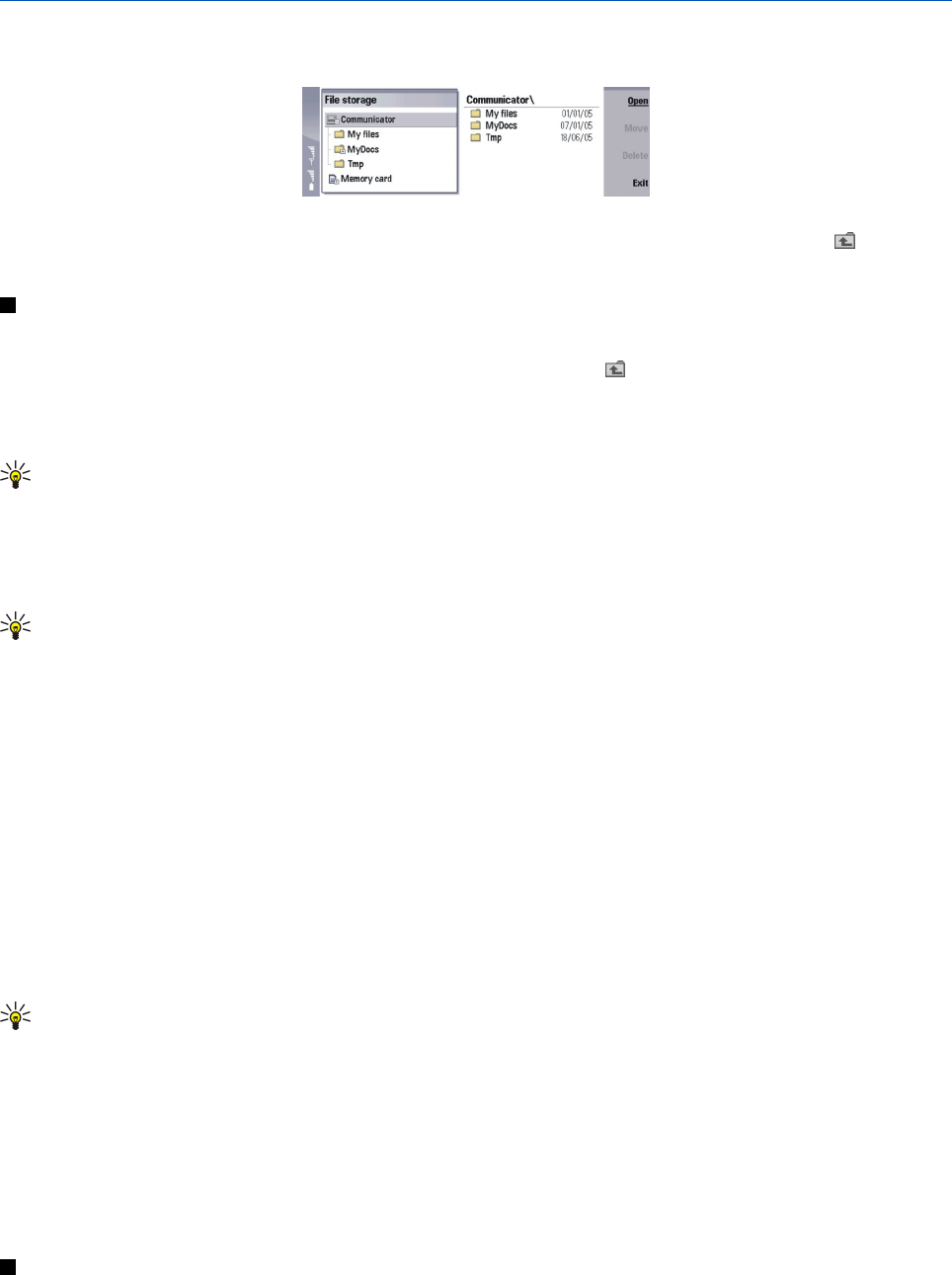
12. File manager
In File manager, you can manage the contents and properties of files and folders.
Go to Desk > Office > File manager.
On the left frame of the File manager view, you can browse and select folders. To expand and collapse folders, scroll right and
left with the joystick. On the right frame you can open subfolders and files. To move up one folder level, select , and press
Open. To move from one frame to another, press the tab key.
Managing files and folders
To open a folder, select the folder, and press Open. A view of all the subfolders and files of the parent folder opens. To open a
subfolder, select the folder, and press Open. To open the upper-level folder, select
, and press Open. Press Close folder to return
to the main view.
To open a file, select the file, and press Open. The appropriate application opens the file. Note that you can open only one file
at a time.
Tip: To view hidden files, press Menu, and select View > Show all files.
To create a new file or folder, move to the location where you want to create the new file or folder, press Menu, and select
File > New folder or New file.... Enter the name, and press OK.
To move or copy files or folders, select the file or folder, press Menu, and select Edit > Cut or Copy. Then move to the location
where you want to place the file or folder, press Menu, and select Edit > Paste.
Tip: You can also move files or folders by pressing Move.
To rename files or folders, select the file or folder, press Menu, and select File > Rename. Enter the new name, and press
Rename. It is recommended that you do not change the names of the default folders. Default folders are folders that the device
creates during the first start-up, such as C:\My files\ and C:\My files\Templates\.
To delete files or folders, select the file or folder, and press Delete.
To view and modify properties of a file, folder, or drive, select the file, folder, or drive, press Menu, and select File >
Properties.... To prevent the file or folder from being edited, select the Read-only field, and select Yes. To change a file into hidden
state, select the Hidden field and Yes.
To add a shortcut to Desk, select the file or folder, press Menu, and select File > Add to Desk.... Select the application groups to
which you want to add the shortcut.
To sort files and folders, press Menu, and select View > Sort by or Sorting order. Select one of the available options.
To send a file, select the file, press Menu, and select File > Send. Select the method of sending.
To modify File manager settings, press Menu, and select Tools > Settings.... You can define whether you want to be able to
browse the system directory and all its folders and files in File manager.
Tip: It is advisable to hide the system directory so that you cannot accidentally delete or move important system files
and risk causing software to malfunction.
To search for files and folders, press Menu, and select Tools > Find.... Enter the text that is included in the name of the file or
folder you are looking for, and press Find. To change the location or refine the search criteria, press Options. To find files and
folders, use the following options:
• wildcards: ? for any character and * for any string
• operators: AND, OR, NOT
• quotes: for example, "mobile phone" searches only for this phrase
In the Results of Find view, you can open and delete the files and folders found, as well as move, copy, rename, and sort them.
Memory card security
You can protect a memory card with a password to prevent unauthorized access.
Copyright © 2005 Nokia. All Rights Reserved. 57
